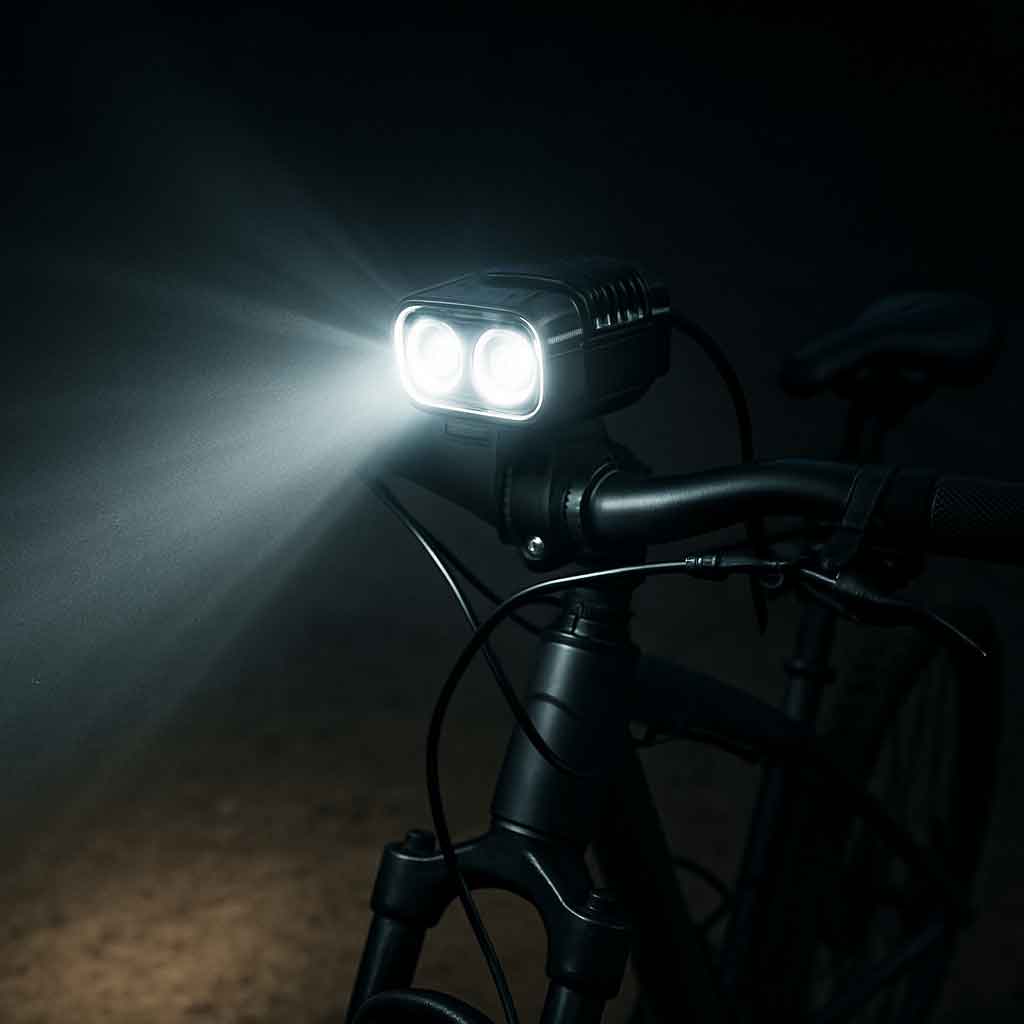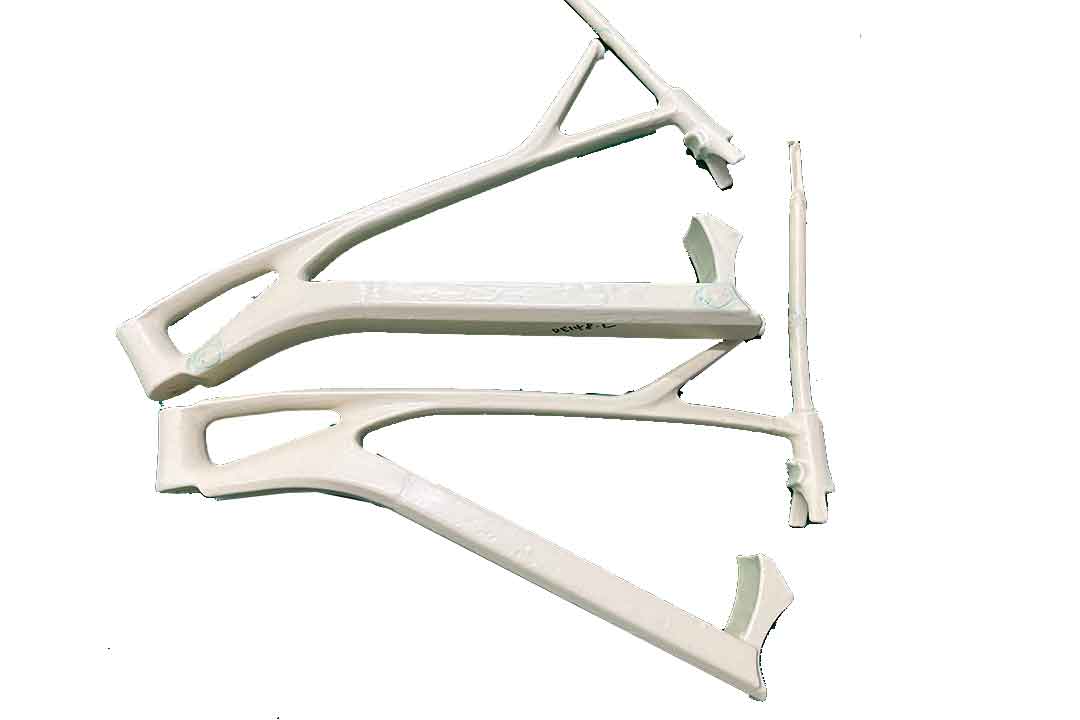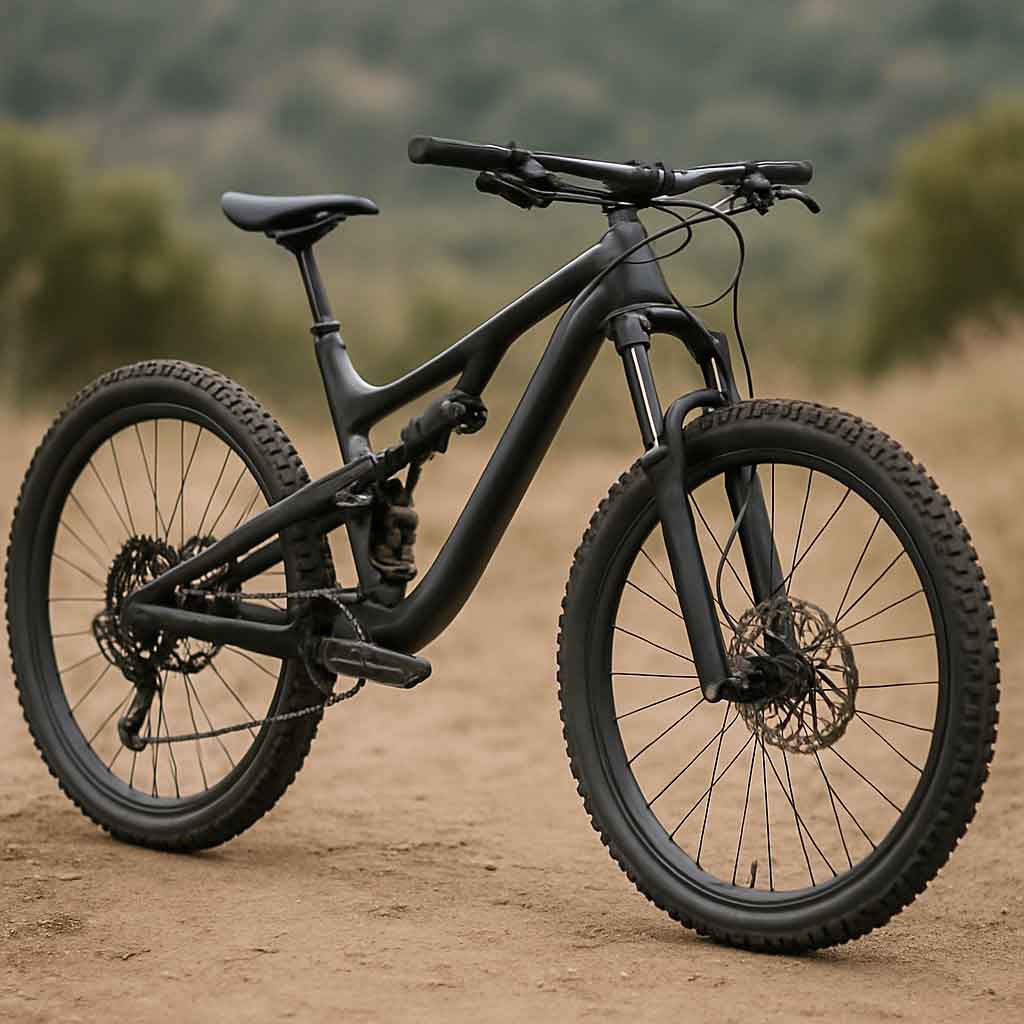Welcome to Mondince Bike - A well-known factory specialized in produce carbon bike frame and other parts since 2007.
Essential Bike Lights for Night Riding
Riding your bike at night can be both exhilarating and practical, but it also comes with its own set of safety challenges. One of the most crucial safety measures is ensuring your bike is equipped with the best bike lights available. In this guide, we'll delve into the essentials of bike lighting, helping you choose the right headlight for a bike and other necessary lighting equipment to ensure you stay visible and safe on the road.
.jpg)
Bike lights are not just a legal requirement in many areas; they are a key safety feature for any cyclist venturing out after dark. They help you see the path ahead and make sure others see you coming, reducing the risk of accidents. With the right bicycle LED lights, you can confidently navigate dark roads, trails, and urban streets, knowing you're visible to motorists and pedestrians.
Legal Requirements and Regulations
In many countries, bike lights are mandatory by law, especially when riding at night or in low-light conditions. Understanding these requirements is crucial to avoid fines and ensure compliance. Regulations typically specify the minimum brightness required for both front and rear lights, and failing to meet these can result in penalties.
Enhanced Safety for Cyclists
Visibility is a major concern for night riders. Proper lighting is essential not just for seeing, but for being seen by others. A well-lit bike can significantly reduce the likelihood of accidents, as it alerts drivers, pedestrians, and other cyclists to your presence. This is particularly important at intersections and busy urban streets where visibility is often compromised.
Confidence in Night Riding
Having the right bike lights can boost your confidence when riding at night. Knowing that you are visible to others and can see potential obstacles ahead allows you to focus more on the ride rather than worrying about safety. This peace of mind can make night cycling a more enjoyable and less stressful experience.
The Role of Front and Rear Lights
When it comes to bike lights, both front and rear lights are essential. The front lamp bike, often referred to as a headlight, illuminates the path ahead, allowing you to see obstacles and navigate safely. The rear light, or tail light, ensures that vehicles approaching from behind can see you. Both are equally important for safe night riding.
Front Lights: Illuminating the Path
Front lights are primarily designed to light up your path. They play a crucial role in helping you spot potholes, debris, and other obstacles that could cause accidents. A strong front light is especially important when riding in rural areas or on unlit roads, where street lighting is insufficient.
Rear Lights: Visibility from Behind
Rear lights are vital for alerting vehicles and other cyclists to your presence. A good rear light will make you visible from a significant distance, reducing the risk of rear-end collisions. Many rear lights also come with flashing modes, which are more noticeable to drivers and can further enhance your safety.
Importance of Balanced Lighting
Both front and rear lights must work together to provide comprehensive visibility. While a bright front light illuminates your way, a reliable rear light ensures you're visible from behind. Investing in quality lights for both ends of your bike is essential for a balanced and effective lighting setup.
Choosing the Best Headlight for a Bike

Selecting the brightest headlight for a bike is crucial for illuminating your path in low-light conditions. Here are some factors to consider when selecting a biking headlamp:
Brightness
The brightness of a bike light is measured in lumens. For urban cycling, a headlight with 200 to 600 lumens is generally sufficient. However, for rural or unlit roads, consider a brighter option, perhaps 800 lumens or more. The best cycling headlight should balance brightness with battery life.
Understanding Lumens
Lumens measure the total amount of visible light emitted by a source. More lumens mean a brighter light. However, it's important not to confuse brightness with beam pattern or focus. A light with a high lumen count isn't automatically better if it doesn't project light effectively.
Urban vs. Rural Lighting Needs
Urban environments, with their ambient street lighting, require different light specifications than rural areas. In cities, lower-lumen lights suffice due to existing illumination. Conversely, rural areas demand higher-lumen lights to compensate for the lack of streetlights and to ensure adequate visibility.
Balancing Brightness and Battery
While a bright light is desirable, it's crucial to find a balance between brightness and battery life. Super-bright lights can drain batteries quickly, so consider your typical ride duration and choose a light that offers sufficient brightness without sacrificing runtime.
Battery Life and Power Source
Battery life is a critical consideration. Look for battery bicycle lights that offer a long runtime on a single charge. Rechargeable bike lights are a popular choice as they are more environmentally friendly and cost-effective in the long run. Ensure your bicycle light rechargeable option offers a convenient charging method, such as USB.
Rechargeable vs. Disposable Batteries
Rechargeable batteries are not only environmentally friendly but also more economical over time. However, they require regular charging. Disposable batteries offer convenience for longer rides without access to charging facilities but can become costly and wasteful in the long run.
Importance of Runtime
Consider how long you typically ride at night. A light with a long runtime ensures you won't be left in the dark unexpectedly. Some lights offer battery indicators, alerting you when it's time to recharge or replace the battery, which is a useful feature for longer journeys.
Charging Methods and Convenience
Look for lights that offer convenient charging options, such as USB charging. This allows you to charge your lights using a variety of power sources, from computers to portable battery packs, making it easier to keep your lights powered up on the go.
Beam Pattern
The beam pattern determines how the light spreads. A focused beam is ideal for illuminating distant objects, while a wider beam provides better peripheral visibility. The best light for cycling at night often features an adjustable beam pattern to cater to different riding conditions.
Focused vs. Wide Beams
A focused beam concentrates light in a single direction, ideal for spotting obstacles far ahead. Wide beams, on the other hand, spread light over a larger area, enhancing peripheral visibility. Depending on your riding environment, you may prefer one over the other or a light that offers both.
Adjustable Beam Patterns
Some bike lights come with adjustable beam patterns, allowing you to switch between focused and wide beams. This flexibility is particularly useful when transitioning from open roads to crowded urban areas where different lighting needs arise.
Matching Beam Patterns to Ride Conditions
Consider your usual riding conditions when choosing a beam pattern. For example, a wide beam is beneficial in urban settings for increased side visibility, while a focused beam is preferable for dark, open roads where spotting distant obstacles is key.
Best Bike Lights for Night Riding
When it comes to selecting the best bike lights for night riding, you need to consider both functionality and budget. Here are some recommended bicycle lights that stand out:
Front Lights
- NiteRider Lumina 1000: Known for its powerful beam, this front bike light offers up to 1000 lumens and features a long-lasting rechargeable battery.
- Powerful Beam: The NiteRider Lumina 1000 provides a bright, concentrated beam, making it ideal for spotting obstacles from a distance. Its robust lumen count ensures excellent visibility even in total darkness.
- Long-lasting Battery: This light offers a commendable battery life, allowing for extended rides without worrying about power depletion. The rechargeable feature ensures you can easily power it up between rides.
- Sturdy Design: Built to withstand the elements, the Lumina 1000 is perfect for riders who frequently face rough weather or challenging terrains.
- Cygolite Metro Pro 1100: With a robust build and impressive brightness, this bike headlight is designed for serious night riders.
- High Brightness: The Cygolite Metro Pro 1100 shines brightly, providing ample illumination for both urban and rural rides. Its high lumen output ensures you're visible to oncoming traffic.
- Durable Construction: Constructed with quality materials, this light is built to last and endure the rigors of regular night riding. It's a reliable choice for riders who demand durability.
- User-friendly Features: Equipped with multiple modes, this light allows you to adjust brightness and conserve battery life based on your riding environment.
- Lezyne Macro Drive 1300XXL: Offering 1300 lumens, this front bike headlight provides excellent visibility and a durable casing for rough rides.
- Ultra-bright Output: With 1300 lumens, the Lezyne Macro Drive ensures superior visibility, lighting up your path brilliantly. It's an excellent choice for those who often ride in poorly lit areas.
- Durability and Reliability: This light is designed to withstand harsh conditions, with a sturdy casing that protects against bumps and falls.
- Versatile Mounting Options: The Macro Drive offers flexible mounting options, making it easy to attach and detach, ensuring you can adjust your setup as needed.
Rear Lights
- Bontrager Flare R: This bike tail light is visible from up to 2 km during the day and night, offering multiple settings for maximum safety.
- Day and Night Visibility: The Flare R is designed to be seen from a considerable distance, ensuring you're visible to motorists even in bright daylight.
- Multiple Settings: Offering various flash modes, this light allows for customization based on your visibility needs and battery conservation preferences.
- Compact and Lightweight: Despite its powerful output, the Flare R remains lightweight and easy to mount, making it a convenient choice for all cyclists.
- Garmin Varia RTL515: Not just a tail light, this device includes radar to alert you of vehicles approaching from behind.
- Integrated Radar: The Varia RTL515 is more than a light; it enhances your safety by alerting you to approaching vehicles, providing peace of mind on busy roads.
- Bright Tail Light: As a rear light, it offers excellent visibility, ensuring you're seen by drivers from a distance.
- Smart Connectivity: It pairs with compatible devices, allowing for a seamless integration into your cycling setup, enhancing both safety and convenience.
- CatEye Rapid X3: Known for its bright output and wide visibility, this rear light is versatile and reliable for city and rural rides.
- High Visibility: The Rapid X3 boasts a bright, wide beam, ensuring you're visible from multiple angles, which is crucial in traffic-heavy areas.
- Versatile Use: Suitable for both urban and rural environments, this light adapts to various riding conditions, ensuring consistent safety.
- Easy Attachment: With a simple mounting system, the Rapid X3 is user-friendly and easy to install, making it a practical choice for everyday use.
Accessories for Enhanced Visibility

by Ting Tse Wang (https://unsplash.com/@kwjko)
In addition to your bike lights, consider adding reflective elements to enhance your visibility. Reflective vests, wheel reflectors, and pedal reflectors are all effective ways to make sure you stand out in traffic.
Small Bicycle Lights
Small bicycle lights, such as spoke lights or helmet lights, can be excellent additions for extra visibility. They may not illuminate your path significantly, but they add side visibility, which is crucial in urban settings.
Spoke Lights
Spoke lights are a fun and effective way to increase side visibility. They attach to your wheel spokes and create a bright, moving circle as your wheels turn, making you more noticeable to drivers approaching from the side.
Helmet Lights
Helmet lights provide an additional light source that follows your line of sight. They're particularly useful for illuminating signs or obstacles that aren't directly in front of your bike, enhancing overall visibility.
Versatility and Style
Small lights come in a variety of styles and colors, allowing you to personalize your bike while enhancing safety. They offer a subtle yet effective way to increase your visibility without adding bulk.
Bicycle Light Kits
For those just starting, a bicycle light kit can be a cost-effective way to get all the necessary equipment in one purchase. These kits typically include both front and rear lights, and sometimes even helmet lights or reflective gear.
Complete Lighting Solutions
Light kits provide a comprehensive lighting solution, ensuring you have everything you need for safe night riding. This convenience is particularly appealing for new cyclists who may be unsure of what equipment to purchase.
Cost-Effective and Convenient
Purchasing a kit is often more economical than buying each component separately. It also simplifies the buying process, as you're guaranteed compatibility between lights, mounts, and any additional accessories.
Easy Installation
Light kits typically include all necessary mounting hardware and instructions, making installation straightforward. This ease of use is ideal for cyclists who want a quick and hassle-free setup.
Tips for Using Bike Lights Effectively
To make the most out of your bike lights, follow these practical tips:
Proper Installation
Ensure that your bike lights are installed securely and aimed correctly. The front light should illuminate the road ahead without blinding oncoming traffic, while the rear light should be clearly visible from behind.
Correct Alignment
Proper alignment is crucial for maximizing the effectiveness of your lights. A front light aimed too high can blind oncoming traffic, while one aimed too low won't adequately illuminate your path. Adjust your lights to ensure optimal performance.
Secure Mounting
Make sure your lights are securely attached to prevent them from falling off during your ride. Check mounts regularly and tighten any loose screws or brackets to ensure stability and reliability.
Adjust for Different Conditions
Consider adjusting your light alignment based on riding conditions. For instance, in foggy weather, angling your lights slightly downward can reduce glare and improve visibility.
Regular Maintenance
Keep your lights clean and check the battery levels regularly. Even the best-rated bicycle lights need upkeep to ensure they perform optimally. Replace batteries as needed and recharge regularly if you have rechargeable bike lights.
Routine Cleaning
Dirt and grime can reduce the effectiveness of your lights by obstructing the lens. Regularly clean your lights with a soft cloth to maintain their brightness and ensure optimal performance.
Checking Battery Levels
Monitor battery levels to avoid unexpected power loss during rides. Rechargeable lights often have indicators that show remaining battery life, making it easier to plan recharges.
Timely Replacements
Over time, batteries can lose their ability to hold a charge. Be proactive in replacing old batteries to ensure your lights remain reliable and effective.
Be Mindful of Battery Life
If you're planning a long ride, carry spare batteries or a portable charger. The brightest bike light won't do much good if it runs out of juice mid-ride.
Planning for Longer Rides
For extended rides, especially in remote areas, it's wise to carry extra power sources. Portable chargers or spare batteries can be lifesavers, ensuring your lights remain functional throughout your journey.
Conserving Battery Power
Use lower brightness settings or flashing modes to conserve battery life when full brightness isn't necessary. This strategy can significantly extend the runtime of your lights.
Regularly Test Your Setup
Before setting out, test your lights to ensure they're functioning correctly. This check helps prevent any surprises during your ride and ensures you're always prepared.
Conclusion
Investing in the best bike lights for night riding is essential for your safety. With a combination of a powerful front bike headlight and a reliable tail light, you can ensure maximum visibility. Whether you're commuting in the city or exploring rural trails, the right bike lighting setup will keep you safe and seen.
Remember, visibility is key when it comes to night riding. Equip yourself with the recommended bicycle lights and stay safe on your nighttime adventures. Happy cycling!
Recap of Key Points
- Importance of Visibility: Bike lights are crucial for safety, legality, and confidence in night riding.
- Front and Rear Lights: Both are essential for comprehensive visibility and safety.
- Choosing the Right Lights: Consider brightness, battery life, and beam pattern to suit your needs.
- Maintenance and Tips: Proper installation, regular upkeep, and battery management are vital for effective use.
Final Thoughts
Investing in quality bike lights is a small price to pay for the peace of mind and safety they provide. As night riders, staying visible is our responsibility, not just for our safety but for the safety of others on the road. Equip yourself wisely and enjoy the freedom and thrill of night cycling.











